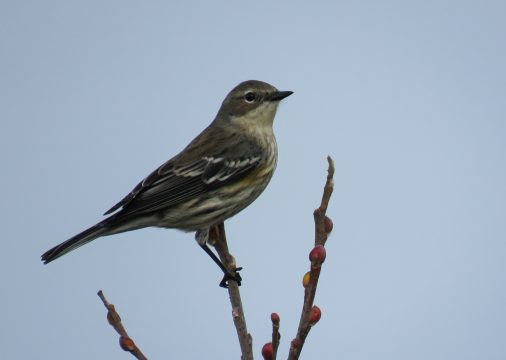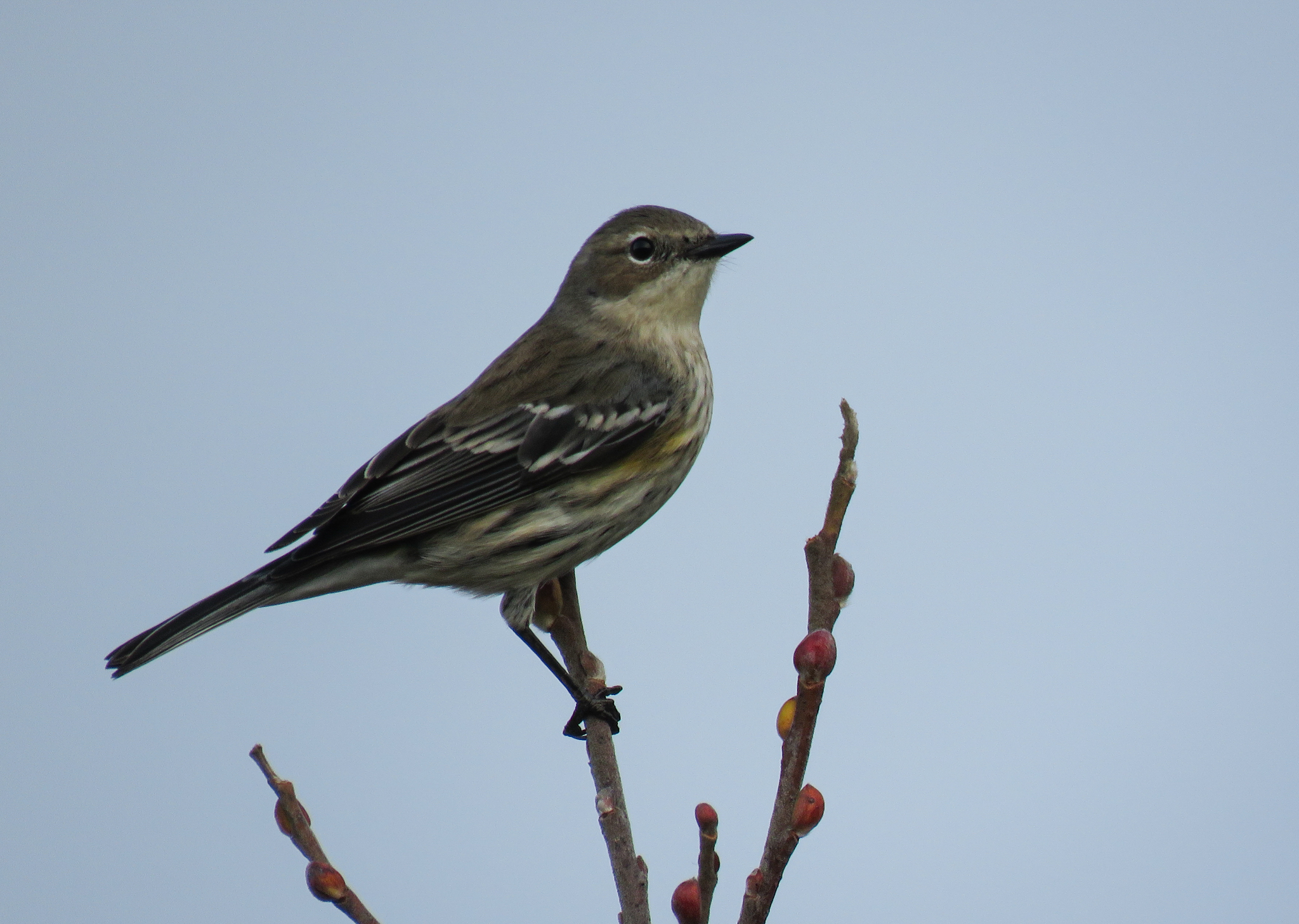Bird of the week: Yellow-rumped Warbler
About: Yellow-rumped Warblers have two subspecies in North America: the “Audubon’s” and the “Myrtle” subspecies. “Audubon’s” Yellow-rumped Warblers are found exclusively in the west, while the “Myrtle” subspecies is found across the states. These birds are fairly drab in fall and winter, with a mixture of tans with slight yellow patches on their shoulders and white eye arcs; however, in the spring, the males’ plumages darken into blacks, grays, and whites with bright yellow shoulders and crown. They are one of the hardiest warblers and are the most common warbler found in winter months in states as far north as Illinois and Washington.
Where to find this bird: Look for them high in trees on Main Hall Green and in trees along the banks of the Fox.
When to find this bird: April — May and August — early November.
Fun fact: Yellow-rumped Warblers are the only warbler able to digest the waxes in bayberries and wax myrtles. This allows them to overwinter further north than any other species, sometimes as far north as Newfoundland.

Chasers, banders and banding code – an intro to birding lingo
Like all fields of obsession, birding has its own unique set of lingo that only the fanatics like myself know and understand well. So that you too can sound like a birding expert, I’ll share some of the most common bird lingo used in the birding world.
Many birders keep a detailed life list: a list of birds that they have seen in their lifetime. When someone sees a species of bird that they have never seen before, it’s called a lifer and gets added to their life list. Birders can get very competitive about their lists and will often keep year lists, month lists, location lists and even day lists. When birders bring these lists to the extreme, they start doing a big year, big month or big day respectively. Birders like to add challenges to their big days or big years by doing them “green,” or motorless, where they don’t drive or fly; doing it in a specific park (or patch); or by doing a global one where they fly around the world. One person even decided that he’d do his U.S. big year in the nude (he saw 594 species).
To expand one’s life list, birders often chase rare birds, also known as vagrants, which means they will drive or even fly to a specific location to see a bird that was recently found by other birders. Birders who do this regularly are called chasers and the rare birds that are found are called stakeouts, due to how other birders often send updates about their whereabouts. These rarities can be a bird that is just a bit out of place, such as an eastern warbler showing up on the west coast, or birds that have been blown from Asia all the way to the pacific coast. That being said, not all unexpected species are countable, meaning that they can not be added to your life list. Birds that have escaped from captivity are branded escapees by a records committee, which is a board of experienced birders and ornithologists who review rare bird reports and vote on whether they should be accepted onto the official list and determine at what point escaped bird populations are allowed to be counted on one’s life list. The American Birding Associations (known as the ABA) manages the official list for the ABA area, which consists of North America north of Mexico, plus Hawaii, though all states have their own records committee which reviews rare bird reports in their state. Of course, one can ultimately decide to count whatever one wants on one’s own life list, but the rules set forth by the ABA are generally followed by birders as it allows them to compare their lists (and compete) in a fair manner.
Birder lingo does not revolve exclusively around listing. We also have a number of important terms they use frequently in the field, including phishing, which consists of imitating scolding alarm calls which attracts flocks of song birds, and giss (also spelled jizz sometimes) which is the overall vibe of a bird. Birders have our own (not so secret) code system called banding code, which is an abbreviation of every bird on earth to a 4 letter code. For birds with a one word name (such as Bobolink), the name gets abbreviated to the first four letters (Bobolink becomes BOBO). For two word names (such as Common Merganser), one uses the first two letters of the first word and the first two letters of the second word (Common Merganser becomes COME) and so on. There are some exceptions to the rules when two birds have similar letter combinations in their names such as Cackling Goose and Canada Goose (both CAGO, but their official banding codes are CACG and CANG). This code originated from bird banders, also known as ringers in England, who are highly trained ornithologists who catch birds with special nets, take specific measurements, weigh the birds and attach small bands to their legs in the hopes that someone will recatch them in the future which will provide information into where that bird travels and how old it can get.
Of course, this is just a fraction of the flock of bird words, but hopefully next time you are around a birding fanatic, you’ll be a bit more educated about what the heck they are talking about.

